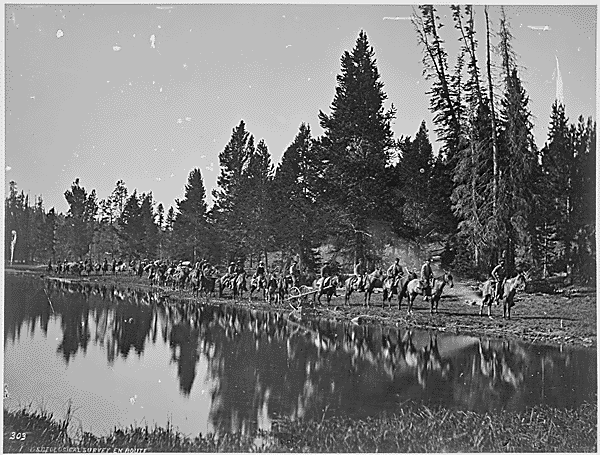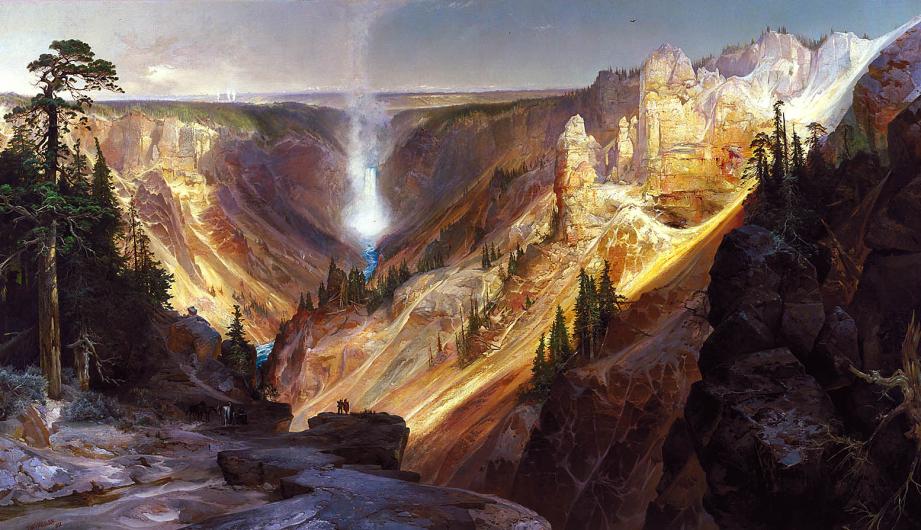
After stopping at Fort Ellis and gathering supplies, Hayden's party departed for the Yellowstone area on July 15, 1871.
In 1871, the US government sent Ferdinand Hayden with a survey team on an expedition to document the area that would soon become Yellowstone National Park. They took temperatures, recorded information, wrote articles for newspapers, and collected samples of geology and botany. After the expedition was over, Hayden was influential in persuading Congress to establish Yellowstone National Park by advocating for its protection and sharing his reports and samples.

After stopping at Fort Ellis and gathering supplies, Hayden's party departed for the Yellowstone area on July 15, 1871.
"Aug 4th remained all this day at the same Camp. did some sketching about the springs. took the Boat to the springs farther round the lake & had a hard pull to get back as the Lake was rough & the wind against us."
-Thomas Moran, painter on the Hayden Geological Survey
Hayden brought two artists on his expedition, painter Thomas Moran and photographer William Jackson, to provide visual representations of Yellowstone, crucial to establishing the national park. Many people in the East didn't believe the stories of the natural wonders within Yellowstone, however, by taking photographs and painting scenes, many people were convinced, adding to the environmental rights movement. Without the art provided, it's possible Yellowstone might not have been established for many years.
"But I have always held that the grandest, most beautiful or wonderful in nature would in capable hands, make the grandest, most beautiful or wonderful pictures; and that the business of a great painter should be the representation of great scenes in nature."
-Thomas Moran, painter on the Hayden Geological Survey

By sharing the art created on the expedition, the public's imagination was captured, sparking their interest in the national park idea.